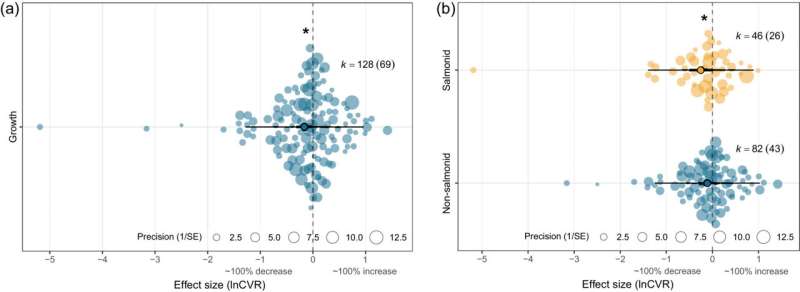This article has been reviewed according to Science X's editorial process and policies. Editors have highlighted the following attributes while ensuring the content's credibility:
fact-checked
trusted source
proofread
How fitter fish can feed more people in the midst of food insecurity

With the growing human population placing enormous pressure on food resources, it is estimated that by 2030 there will be an additional half a billion people to feed. This, combined with the rising cost of living, has amassed worldwide concern for the future of food security.
While the aquaculture industry is preparing to address this demand, there is a need to find innovative ways to grow fish faster.
New research from Murdoch University lecturer Dr. Essie Rodgers and research fellow Dr. Daniel Gomez Isaza published in Reviews in Aquaculture has revealed that exercise regimes can help fish reach marketable sizes at an accelerated rate.
Statistical models showed that fish that had been exercised via manipulating water currents grew about 10% quicker than fish kept in still water.
"Using statistical methods, we show that regardless of training regime used, fish that were exercised grew much faster than fish that were not exercised," Dr. Rodgers said. "We also found that all species of fish benefitted from exercise training, and not just athletic fish like salmon."
Additionally, the research found that fish did not require more food or resources to grow faster. Dr. Gomez Isaza said they had identified optimal training regimes or "workouts" which would be useful to fish farmers.
"We found a large number of studies that have exercised fish, but many use different training regimes, like different water speeds, durations and species," he said.
The ideal training regime identified through the research included continuous exercise rather than intermittent at target speeds for longer periods of time.
Exercise training was also associated with decreased variability in growth rates, leading to not only larger fish, but fish that are more uniform in size.
More information: Essie M. Rodgers et al, The growth‐promoting effects of exercise in finfish: A systematic review and meta‐analysis, Reviews in Aquaculture (2023). DOI: 10.1111/raq.12879
Provided by Murdoch University





















